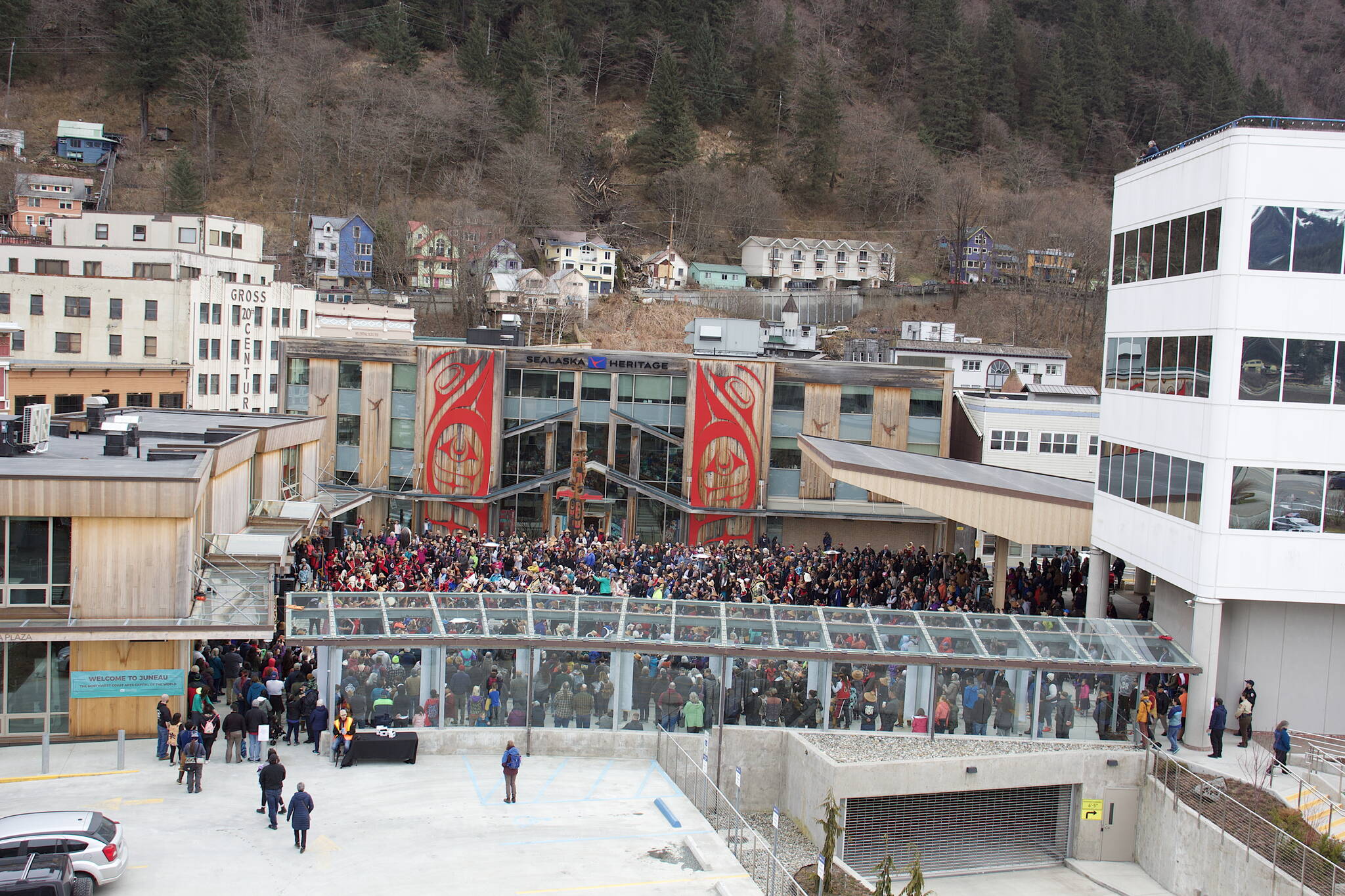Sealaska Corp. is paying a lower annual shareholder dividend for the first time since at least 2014, with the $5.85 per share this year a drop from $7.67 last year and the lowest payout since $5.40 a share in 2018, according to a statement released Thursday by the Southeast Alaska Native corporation.
The lower dividend is causing unhappy shareholders to criticize Sealaska’s leadership, citing among other factors a $10-per-share dividend announced by Goldbelt Inc. on Saturday. Sealaska’s leaders, in turn, say a number of factors account for the lower dividend.
A virtual question-and-answer meeting is scheduled at noon Tuesday by Sealaska directors to discuss the fall share distribution and financial results for the most recent fiscal quarter.
A total of about $17.2 million is being paid to nearly 26,000 shareholders for the 2023 fiscal year, compared to $15.4 million paid to about 23,000 shareholders — equating to $7.62 a share — in 2022. The higher shareholder number this year comes after members voted in June of 2022 to get rid of a blood quantum requirement that descendants of original shareholders prove they have one–quarter Native blood to become a shareholder.
Notable jumps in the annual dividend that was $1.36 in 2014 include $2.60 in 2015, $5.40 in 2018 and $7.30 in 2020.
Dividends are paid twice a year and this fall’s dividend — accounting for $13.6 million of the total $17.2 million annual payout — includes $4.5 million from Sealaska operations, $3.0 million from the Marjorie V. Young Shareholder Permanent Fund and $6.1 million in Alaska Native Claims Settlement Act Section 7(j) natural resource revenue sharing funds, according to a company press release.
“Sealaska invests for today and tomorrow,” Sealaska President and CEO Anthony Mallott said in a prepared statement. “As we continue to grow income sources that rest fully within our control, we’re able to grow the benefits we provide to current shareholders. This also makes it possible for us to continue making long-term investments — the memorial and educational scholarship funds, for example — that benefit both original shareholders, second- and third-generation descendant shareholders, and those yet to come.”
But among the reasons for dissatisfaction expressed by Amanda Warren, a Sealaska shareholder in Lynnwood, Washington, are a seemingly poor level of financial performance comparatively, a lack of transparency by leaders with shareholders, and high compensation for Sealaska executives while dividends are being reduced.
“You have shareholders and elders, especially elders, who are struggling to make ends meet,” she said in an interview Monday. “And the dividends can’t even keep keep up with the cost of inflation.”
The issue goes beyond just a lower dividend this year, stating there have been concerns about Sealaska’s financial strategies for the past three to five years, Warren said.
“We know that Sealaska has been struggling,” she said. “We’ve been trying to give people more opportunities. But it’s just like people are being shut down, our own shareholders don’t feel like we’re even a part of our company anymore.”
Brad Fluetsch, director of financial planning for the New Mexico Finance Authority and an administrator of the Shareholders of Sealaska Facebook group since 2014, shared slides showing Sealaska’s operations have lost money three of the past five years, and 17 of the past 23 years, stating that net profits are the largely the results revenue sharing with other Native corporations, investment income and — in recent years – from carbon credits.
Fluetsch, in an interview Monday, said an increase in shareholders will obviously impact dividend amounts. But he said the larger problem is Sealaska is underperforming compared to other Alaska Native corporations.
“What is in your operations that is losing so much money?” he said. “How can you make an investment in an eastern Atlantic seafood company and you’ve lost money four years in a row? How come you’re not getting all these government contracts like every other Native Corporation in Alaska is yet?”
Attempts to contact Mallott for comment Monday were unsuccessful.
In a “Fall 2023 Distribution Analysis” published at Sealaska’s website, the company states “operating income remains strong, and we continue to see a recovery in investment income with the MVY permanent fund.” However, it notes payouts are affected by several factors, one of which is carbon credits income which is now declining after larger initial payouts starting in 2018 due to a five-year average income formula.
“We have spent much of 2023 working to get a third carbon project off the ground, as well as continuing to grow our business platform,” the analysis notes. “Both efforts are helping to partially offset this expected decline stemming from the absence of carbon income from the current dividend calculation.”
The company’s analysis also states it is coming “to invest in our operating businesses to decrease our reliance on those income sources over which we have less control.”
“Since 2015, we have more than tripled the annual amount that has been invested in programs designed to promote the education, economic and cultural benefit of our shareholders,” the analysis states. “These benefits include scholarships, internships, funding for language revitalization, and contributions to communities to promote economic resilience and cultural vitality.”
Goldbelt dividend continues long-term rise
As with Sealaska, Goldbelt’s dividends have generally risen steadily over the years, from $3.75 in 2014 to $10 this year, said McHugh Pierre, the company’s president and CEO, in an interview Monday. He said there was a slight drop in 2017, but then a huge upward spike to $14 in 2021 due to a “windfall revenue year” when Goldbelt secured government contracts for critical COVID-19 related supplies such as test kits.
As for the past year, “for revenue projections we’re meeting our expectations and for net income projections we’re exceeding our expectations,” he said
Goldbelt’s $10 per-share distribution this year, representing a total amount of $2.7 million, compares to $8 per-share last year when $2.3 million was distributed, according to a company statement.
• Contact Mark Sabbatini at mark.sabbatini@juneauempire.com or (907) 957-2306.

